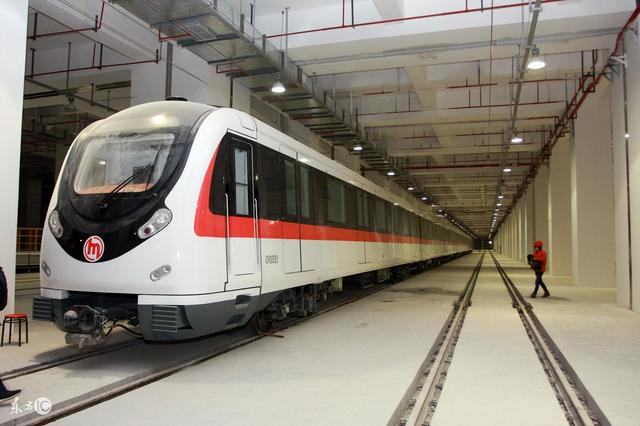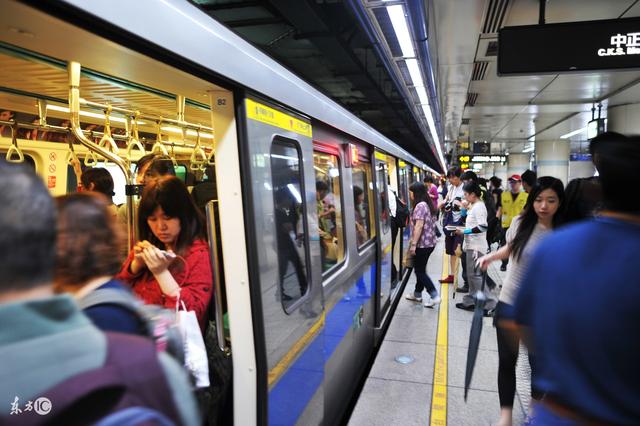Do you know where your daily life and workplace are, and where is the worst air quality?
With the development of cities and population growth, urban subways are constantly being built and expanded. At present, Beijing has 17 routes and the daily average passenger flow exceeds 7 million passengers. It is the fifth busiest metro city in the world. The convenience brought to us by the subway is indescribable, but staying in the subway for a long time will also pose a great threat to our health.

One, how dirty the air in the subway
The British “Daily Mail†published the latest survey of the King’s College in London, UK and found that the air in the subway is the dirtiest in indoor and outdoor environments.
Researchers at King's College London chose six physically healthy volunteers to carry an air detector with them and monitor their air quality at any time during the day. The monitoring results showed that the air quality in the subway was the worst. The concentration of PM2.5 per cubic meter reached 64 micrograms; followed by driving on the road, the value was 33; and then went down: walking to shopping malls and playgrounds, with a value of 31; In the peak period, riding a bicycle on the road is 26; driving in the tunnel is 21; cooking in the kitchen is 19. Relatively speaking, gardens and smoke-free homes have the best air quality, with PM2.5 values ​​not exceeding one.
The 2009 Shanghai Metro Station Environmental Quality Analysis showed that the average concentrations of PM1.0, PM2.5, and PM10 at Shanghai test stations reached 234ug/m3, 293ug/m3, and 372ug/m3, respectively, and the concentration of particulate matter exceeded the standards. Among them, the People's Square Station is the most serious, with an average PM10 concentration of 825 ug/m3, which is 3.3 times the subway design specification and 5.5 times the indoor air quality standard.
Relative to the outside of the subway, the interior of the subway is a relatively closed space. The air exchange between the subway station and the outside world can only be carried out through the station entrance and the limited tunnel ventilation shaft. When the peak population density increases in the morning and evening and there are people squatting, the ventilation effect becomes worse and unbearable. Moreover, in a relatively confined space, people can produce 5 million small particles every minute, such as falling dander, sneezing droplets, clothing fibers, dust on the soles, etc., and can be used at any time. People inhale into the body.
At the same time, highly concentrated people in the subway will emit a lot of odors and carbon dioxide, and produce various microbial bacteria. In addition, poor ventilation, insufficient sunlight, biological contaminants such as bacteria will survive and spread in the specific environment of the subway for a long time. .

Second, the air pollution can be fatal
Although the interior of the subway has undergone a unified cleaning and disinfection process, including cleaning of the ground, seats and handrails. However, such disinfection is far from enough. During the operation of the subway, microorganisms such as handrails, handles, and bacteria on the seats are exchanged by passengers who come and go at all times. Disinfection in the garage alone is not enough to prevent the spread of microorganisms.
Hahn Carlsson, a Swedish medical professor, published a paper in the Swedish Science Daily that the composition of the air in the subway system is very different from that on the ground. The air in the subway contains a variety of harmful particles that can damage the DNA structure of the human body. Penetration into the main body organs, including the lungs, brain, liver, and kidneys, is even more damaging than the exhaust gas on the health of passengers. These harmful particles do not exist in the subway for a long time. Normally, the concentration of harmful particles is the highest in spring and the lowest in winter.
Professor Carlson learned from the study of the air in the Stockholm Metro that he had inhaled large amounts of carbon, asphalt, iron, and other small particles of pollutants over a long period of time, causing more than 5,000 premature deaths each year in Sweden. After research, we concluded that iron particles contained in the air of the subway have the greatest damage to the body's DNA. When these iron particles enter human organs, they form a type of free radical in human cells, which not only endangers the human's genetic mechanism. , but also will increase the risk of cancer. Some harmful substances also induce various types of inflammation. The particles are mainly caused by friction between the wheels and the rails.
Third, the source of air pollutants in the subway
1. In order to ensure the airtightness of the vehicle body and the requirements for interior decoration and energy saving, metro vehicles use a large amount of decorative materials and insulation materials. These materials will directly release many volatile organic compounds into the compartment. Chemical pollutants;
2. Highly dense people in subway vehicles will emit a lot of odors and carbon dioxide, and produce a variety of microbial bacteria;
3. Dust and more, together with poor ventilation and insufficient sunlight, bacterial and other biological contaminants in subway vehicles will survive and spread for a long time in the specific environment of the subway.
4. Contaminants released from the building decoration materials of the subway station system and other factors will be introduced into the cars of the subway vehicles through frequent opening and closing of new air outlets of subway vehicle air conditioners and subway vehicle doors.
The pollutants produced through the above four pathways mainly include: aldehydes, benzene series, volatile organic compounds (VOC, Volatile Organic Compounds) and air microorganisms, carbon dioxide (CO2), inhalable particles (IP, InhalableParticulate).
Fourth, how to reduce the harm caused by the subway air
1. Wear a mask when entering the subway
PM2.5 is currently considered to be one of the most harmful air pollutants. Even healthy people are exposed to the pollution environment for a long time, which causes various chronic diseases. Those who often take the subway can choose to wear professional protective masks, such as N90, N95, etc. In addition to blocking PM2.5 particles, they can also filter bacteria and other microorganisms. In order to avoid the pollution particles generated by the friction between the wheels and the track to the maximum extent, they should be as far away from the platform as possible when entering and exiting the subway.
2, wash your hands frequently
Wash your hands each time you finish the subway, and wash your hands with water, soap, hand sanitizer, or disinfectant. When washing your hands, pay special attention to the gaps between the fingers, fingernails, and other places. Many diseases of the gastrointestinal tract are transmitted through the hand as a medium. When you take the subway, you can use money to buy tickets, grab elevator handrails, or pull handles in the compartments. You may be exposed to these pathogens.
3, strengthen inspection and supervision
Relevant departments should pay attention to the subway environment, such as the regular replacement of air-conditioning air-conditioning filter elements and filters; real-time monitoring and informing the public of PM2.5 values ​​in the subway; and the health authorities should strengthen inspection and supervision.
4, the use of environmentally friendly materials, reasonable layout exhaust outlet
Reducing the production of harmful substances is an effective measure to improve the air quality of the subway. Flue gas from smoking and formaldehyde from volatile building materials are common sources of pollution. Therefore, the subway is non-smoking and the use of environmentally friendly decoration materials will help ensure the air quality within the subway station. In addition, the amount of ventilation will directly affect the air quality in the subway. In the construction of the subway, the location of the delivery and exhaust vents should be arranged rationally. For example, the exhaust outlet should be located as close as possible to areas with high concentrations of harmful substances or harmful substances; Should be as close to the customer as possible, and be evenly distributed, reduce eddy currents, and avoid the accumulation of harmful substances in local areas.
Ningbo Actmix specialized in producution the non-staining special accelerator for rapid vulcanization of EPDM and other diene rubbers nots containing any secondary amines that can form N-nitrosamines. Our Zinc dialkyldithiophosphate salt included ZDTP-50GE, ZDTP-50GE, ZBOP-50GE, TP-50GE & ZBPD-50GE.
Our Excellent environmental scorching retarder for natrual & synthetic rubber,improve the EPDM & NBR vulcanization cross-linking density, improve the stretching stress, reducing permanent deformation.
OBSH organic blowing agent for the manufacture of sponge and foam rubber articles based on natural and synthetic rubbers.
We are Foaming Agent (like microspheres foaming agent), Scorching Retarders, Zinc Dialkyldithiophate Salt leading manufacturers in China. Supply N-Nitrosamine free Rubber Chemicals is our task, included ZDTP-50 , ZDTP-50, ZBOP-50 , TP-50 , ZBPD-50 , Retader E-80 .
Zinc Dialkyldithiophate Salt, Scorching Retarders, Foaming Agent
Foaming Agent, Scorching Retarders, Zinc Dialkyldithiophate Salt,ZDTP-50, ZDTP-50, ZBOP-50, TP-50, ZBPD-50, Retader E-80
Ningbo Actmix Rubber Chemicals Co.,Ltd. (Ningbo Actmix Polymer Co.,Ltd.) , http://www.actmix-chemicals.com